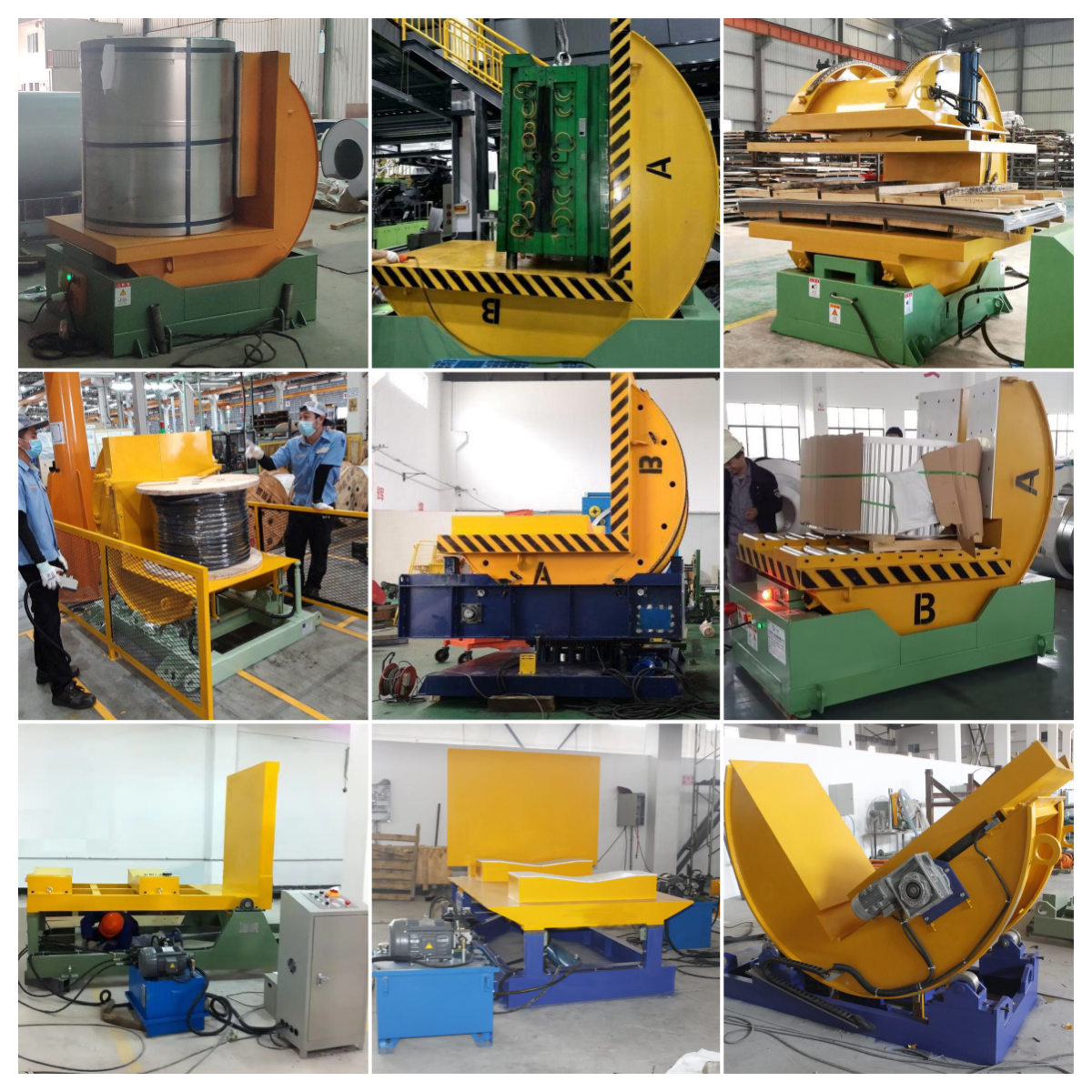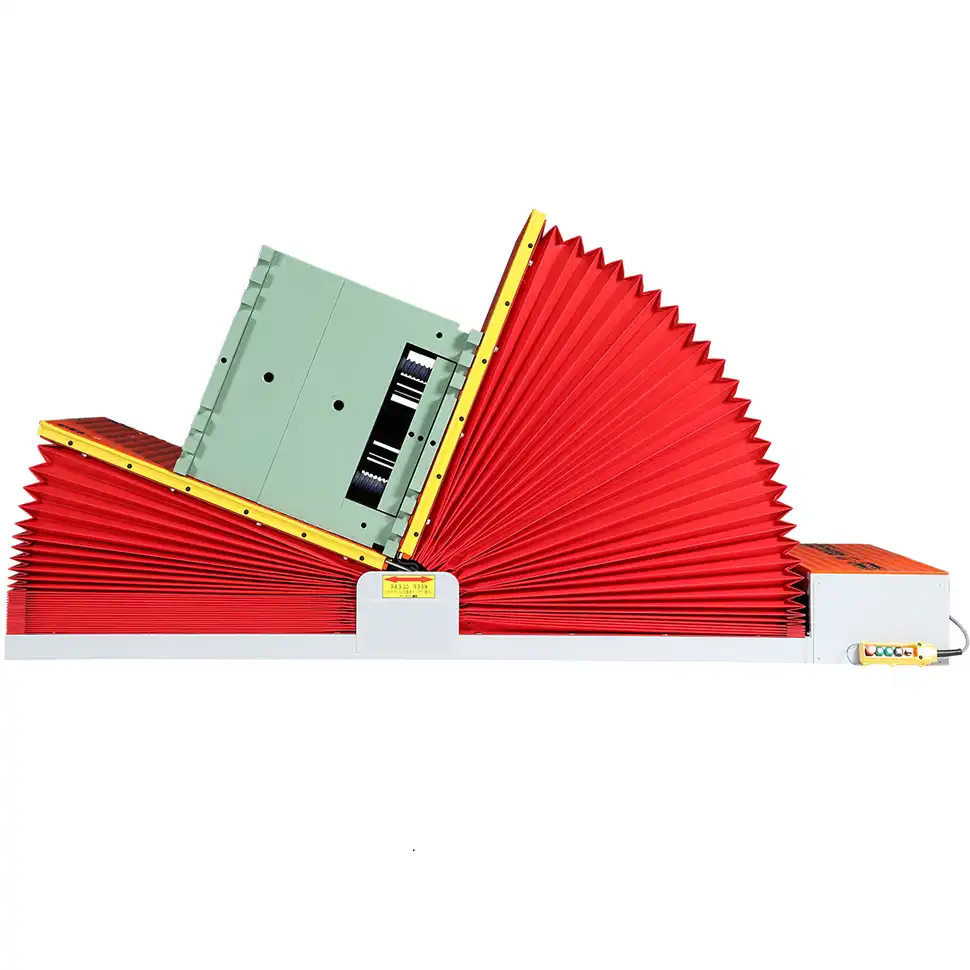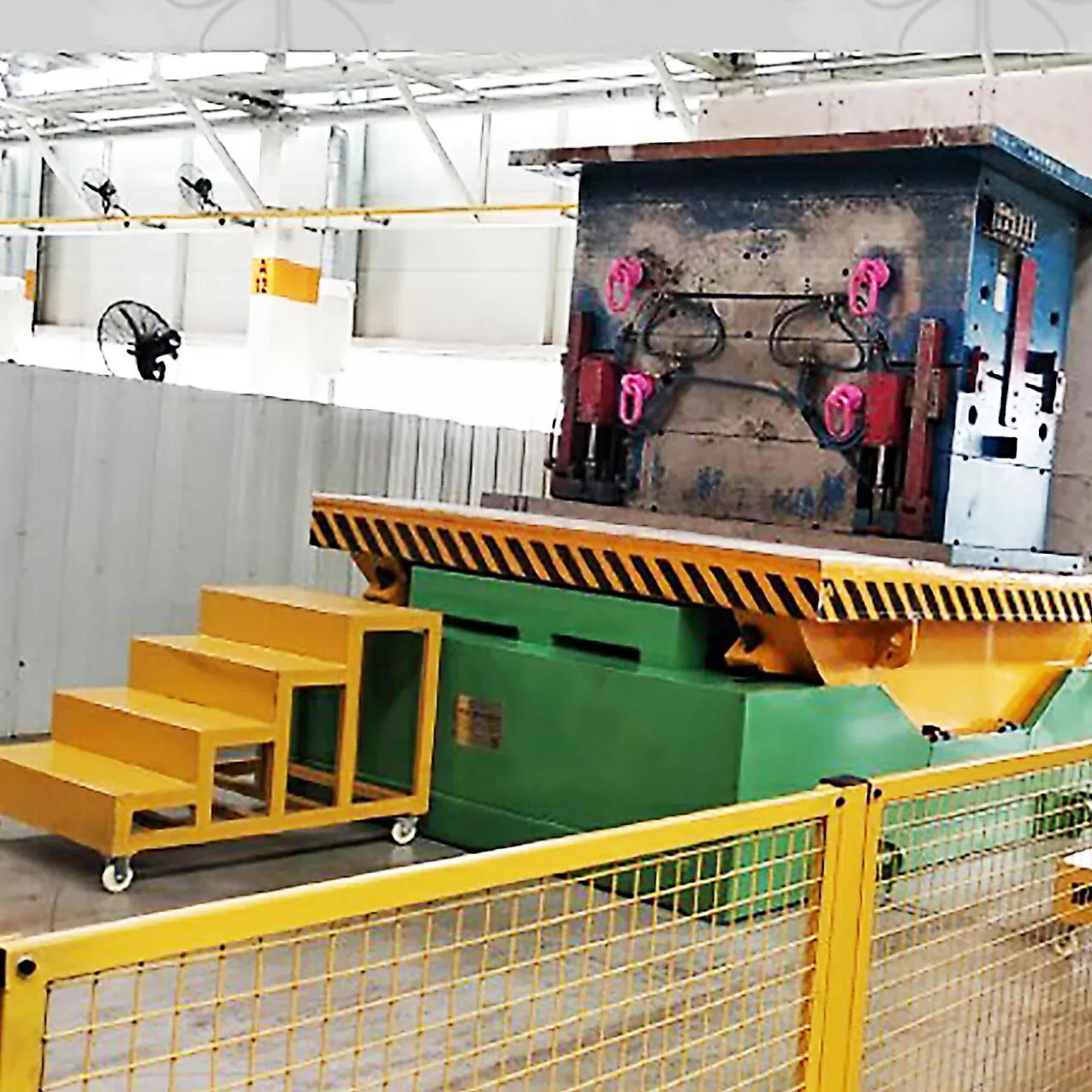Mold Flipper: What ROI Can Thai Factories Realistically Expect Within a Year?
Are you running a factory in Thailand that uses heavy molds? Then you know the daily struggle. Turning a multi-ton mold with a crane is slow, dangerous, and a constant source of anxiety. You worry about your team's safety, the risk of damaging an expensive mold, and the production delays that follow. This inefficient process eats into your profits and adds stress you don't need, especially in today's competitive market. What if there was a dedicated, safe, and efficient way to handle this critical task, one that paid for itself faster than you think?
Based on my experience helping numerous factories, a Thai factory can realistically expect a Return on Investment (ROI) of 15% to 30% from a mold flipper within the first year. This return is driven by significant reductions in labor costs, prevention of mold damage, and major improvements in operational safety and speed.

Seeing a number like 15-30% ROI might seem optimistic. I understand the skepticism. As an engineer and a factory owner myself, I always look at the numbers behind the claims. This ROI isn't just about one single benefit. It's the combined effect of several key improvements across your entire operation. It comes from saving money on labor, avoiding costly accidents, extending the life of your valuable molds, and speeding up your entire production cycle. Let's break down exactly where these savings come from, so you can see how they apply to your own factory floor.
How does a mold flipper directly cut your operational costs?
You look at your monthly operational costs and see the usual suspects: labor, maintenance, and equipment wear. You accept them as the cost of doing business. But what if a significant part of that cost is tied to one inefficient process: turning molds? Every time your team uses a crane for this task, you're paying for multiple operators, you're tying up a crane that could be used elsewhere, and you're risking damage that leads to expensive repairs. These hidden costs add up quickly, silently draining your budget.
A mold flipper directly cuts operational costs by reducing the labor required for turning from a multi-person team to a single operator, and by freeing up your overhead crane for its primary lifting duties. This immediately lowers man-hour expenses and improves overall workflow efficiency.

Deeper Dive: Analyzing the Cost Savings
When I ran my own factory, I was obsessed with operational efficiency. Every process was under scrutiny. The traditional method of flipping molds using chains and an overhead crane always bothered me. It was a bottleneck. Let's break down the cost savings a mold flipper brings, using a practical comparison.
Labor Cost Reduction
The most immediate saving is in labor. Turning a heavy mold with a crane is not a one-person job. You typically need at least two or three people: one to operate the crane and one or two on the ground to guide the mold, adjust the chains, and ensure it doesn't swing wildly. This is a skilled, high-risk operation that can take anywhere from 30 to 60 minutes.
With a mold flipper, this process is transformed. A single operator can safely control the entire 90-degree or 180-degree turn in just a few minutes with the push of a button.
| Metric | Manual Flipping (Crane) | Mold Flipper | Savings |
|---|---|---|---|
| Operators Needed | 2-3 | 1 | 1-2 Operators |
| Time per Flip | 30-60 minutes | 2-5 minutes | 25-55 minutes |
| Crane Usage | Required for entire duration | Not Required | Frees up crane |
Let's imagine your factory in Thailand flips 4 molds per day. With the manual method, you could be spending up to 4 hours of skilled labor and crane time just on this task. With a mold flipper, that time drops to less than 20 minutes of a single operator's time. The savings in man-hours alone are substantial over a year.
Preventing Equipment and Mold Damage
The second major cost saving is damage prevention. Every time a mold is lifted and turned with chains, there's a risk. The chains can slip, the load can be unbalanced, or it can be set down too hard. This can cause dents, scratches, or cracks in a mold that can cost thousands of dollars to repair. Worse, a dropped mold can damage the factory floor or other nearby equipment.
A mold flipper supports the mold securely on a wide platform throughout the entire turning process. The movement is smooth and controlled. This virtually eliminates the risk of accidental damage from dropping or mishandling. Think about the cost of your last mold repair or replacement. A mold flipper is an insurance policy against that expense.
What are the safety improvements and how do they translate to financial ROI?
The factory floor is a place of constant motion and potential hazards. As a manager or owner, the safety of your team is your top priority. But you're also aware that accidents are incredibly expensive. You've seen the reports on workplace injuries in Thailand's manufacturing sector. An accident involving a multi-ton mold isn't just a minor incident; it can be catastrophic, leading to serious injury, legal issues, and a damaged reputation. This constant risk creates a stressful environment for everyone.
The safety improvements from a mold flipper are profound, and they translate directly to financial ROI by drastically reducing the risk of accidents. This leads to lower insurance premiums, avoidance of hefty fines and compensation claims, and improved worker morale, which boosts productivity.

Deeper Dive: The Financial Value of a Safer Workplace
I will never forget a story a client in the automotive parts industry told me. They had a near-miss where a 5-ton mold slipped in its chains while being turned. Nobody was hurt, but the shockwave it sent through the team was immense. Production stopped, and for weeks, workers were visibly anxious during any crane operation. Productivity dipped. That incident, even without an injury, cost them real money. This is why investing in safety is not an expense; it's an investment with clear returns.
Direct Financial Impact of Accident Avoidance
The costs of a workplace accident are staggering and go far beyond immediate medical bills. Let's look at the real numbers you avoid with a safer process.
- Medical and Compensation Costs: A serious injury can lead to massive medical expenses and long-term worker compensation claims. In Thailand, these costs are significant and can impact your company for years.
- Regulatory Fines: Government safety agencies can impose heavy fines for unsafe working conditions, especially after an accident has occurred.
- Legal Fees: Defending against lawsuits is both time-consuming and expensive.
- Increased Insurance Premiums: Your insurance provider will see a major accident as a sign of high risk. Your premiums will almost certainly increase, a recurring cost that hits your bottom line every year.
A mold flipper removes the human element from the most dangerous part of the turning process. The operator stands at a safe distance, controlling the machine from a panel. This simple change in procedure mitigates the single biggest cause of mold-handling accidents.
Indirect ROI from Improved Morale and Reputation
The "soft" benefits of safety often have the hardest financial impact.
- Productivity and Morale: A safe worker is a focused and productive worker. When your team doesn't have to worry about a heavy load swinging precariously over their heads, they can concentrate on their tasks. This leads to better quality work and higher output. After the near-miss I mentioned, my client saw a 10% drop in that team's efficiency for a full month.
- Employee Retention: Skilled workers don't want to work in an environment they perceive as dangerous. High employee turnover is expensive due to the costs of recruiting and training new staff. Creating a safe workplace helps you retain your best people.
- Company Reputation: In today's world, a company's reputation as a safe employer is a valuable asset. It helps in attracting talent and can even be a deciding factor for some customers who audit their suppliers' working conditions.
Investing in a mold flipper sends a clear message to your team: their safety matters. That message pays dividends in loyalty, focus, and productivity, all of which contribute to your one-year ROI.
Can a mold flipper actually boost your production uptime and mold lifespan?
Every minute your production line is down costs you money. You're constantly fighting against delays, whether from slow changeovers or unexpected equipment failures. When a mold needs maintenance or to be changed for a new production run, the clock is ticking. Using a crane to flip the mold is a major bottleneck. It's slow, ties up the crane, and the rough handling can cause micro-damage that shortens the mold's expensive lifespan. This inefficiency chips away at your overall plant productivity.
Yes, a mold flipper directly boosts production uptime by turning a 30-60 minute mold changeover into a predictable 5-minute task. It also extends mold lifespan by eliminating the stress and impact damage caused by chains and cranes, ensuring better long-term asset value.

Deeper Dive: Maximizing Your Assets and Time
Uptime is the king of all metrics in a factory. It directly correlates to revenue. Anything that increases uptime is a powerful tool for profitability. From my own experience, the most successful factories are the ones that master the art of the quick changeover.
The Impact on Production Uptime
Let's quantify the effect on uptime. The process of changing a mold involves several steps: removing the old mold, turning it for maintenance, bringing in the new mold, and possibly turning it for installation. The turning part is often the longest and least predictable part of this sequence.
Imagine a typical scenario in a Thai plastic injection or metal stamping factory:
- With a Crane: Finding a free crane can take time. Then, the careful, slow process of rigging and turning begins. The entire changeover could take 1.5 to 2 hours, with the flip itself accounting for up to an hour of that. If you have 2 changeovers per day, that's up to 4 hours of downtime.
- With a Mold Flipper: The mold is brought to the flipper by a forklift. The turn takes less than 5 minutes. The crane is never involved. The entire changeover time can be cut in half. Reducing 4 hours of downtime to 2 hours per day is a massive gain. Over a year, that's hundreds of hours of extra production capacity you've unlocked with one machine.
This new efficiency allows for more agile production scheduling. You can do shorter runs more profitably because the changeover penalty is so much lower.
Extending the Lifespan of Your Molds
Molds are one of the most valuable assets in many factories. They are precision-engineered and very expensive. The way they are handled directly impacts their longevity.
- The Damage from Chains: When you use chains, the lifting force is concentrated on a few small points. This creates stress on the mold's structure. Setting the mold down, even carefully, can cause impacts that lead to misalignment or micro-fractures over time. These issues eventually result in quality problems with the finished products or require costly mold refurbishment.
- The Protection of a Flipper: A mold flipper uses large, flat platforms to support the entire weight of the mold evenly. The turning motion is a smooth, hydraulic or electro-mechanical action with no shocks or impacts. This gentle handling preserves the mold's structural integrity and precision alignment.
By investing in a mold flipper, you're not just buying a machine; you're protecting your larger investment in your molds. A mold that lasts 20% longer because it was handled correctly represents a huge long-term saving, and the initial benefits of reduced maintenance and better part quality start contributing to your ROI in the very first year.
Beyond the sticker price: How does choosing the right supplier impact your one-year ROI?
You've analyzed the numbers. You see how a mold flipper can save you money, improve safety, and boost uptime. Now you start looking for suppliers, and you see a wide range of prices. It's tempting to go for the cheapest option, thinking a machine is just a machine. You might believe that saving money on the initial purchase is the fastest way to a good ROI. But this is a trap I've seen many factory owners fall into, and it often leads to disaster.
Choosing the right supplier is the most critical factor in achieving your target ROI within a year. A cheap machine with poor support can lead to extended downtime, safety hazards, and unexpected costs that completely erase any potential savings. A true partner ensures the machine is right for your needs, installed correctly, and supported reliably, guaranteeing a positive return.

My Insight: A Partner, Not Just a Purchase
Early in my career, long before I started SHJLPACK, I was a young engineer in a factory that needed a new piece of handling equipment. We went with the lowest bidder to save on the capital expense. It was a mistake I'll never forget. The machine arrived with minimal documentation, all in a language we couldn't read well. The supplier offered no installation support. We spent weeks trying to get it working right. When it finally ran, it broke down within a month. Getting spare parts was a nightmare. That "cheap" machine cost us more in downtime and frustration than the more expensive options would have.
That experience taught me a vital lesson: the true cost of a machine is not its purchase price. It's the total cost of ownership. Your ROI is directly tied to the machine's performance and reliability, which depends heavily on the supplier.
What a Strategic Partner Provides
When you evaluate a supplier for a mold flipper, you're not just buying steel and hydraulics. You're investing in a solution. Here’s what a good partner brings to the table, and how it protects your one-year ROI:
- Expert Consultation: A good supplier will first seek to understand your specific needs. How heavy are your molds? What are their dimensions? What is your workflow? They will recommend a machine that is not too big (wasting money and space) or too small (unsafe and prone to failure). The right machine specification is the foundation of a good ROI.
- Quality and Reliability: A partner's reputation is built on the quality of their machines. They use better components, stronger welds, and more reliable control systems. This means less downtime, fewer repairs, and a longer operational life. A machine that runs reliably every day is a machine that is generating ROI.
- Installation and Training: The machine needs to be installed correctly and your team must be trained to use it safely and efficiently. A good supplier provides this service. A bad installation can be dangerous and cause premature wear. Improper operation can lead to accidents. Both destroy ROI.
- After-Sales Support: What happens when you need a spare part or have a technical question? A strategic partner has a support system in place. They can get you parts quickly and provide expert advice to resolve issues fast. This minimizes downtime and keeps your operation running smoothly. The cheapest suppliers often disappear after the sale.
Think of it this way: the supplier is just as important as the machine itself. Your goal is to achieve a 15-30% ROI in one year. That is only possible if the machine works as intended from day one and continues to work reliably. Choosing the right partner is the best way to guarantee that outcome. It's the difference between buying a tool and investing in a solution for your factory's success.
Conclusion
A mold flipper is more than just a piece of equipment. It is a strategic investment in safety, efficiency, and profitability that can deliver a tangible ROI within the first year.





